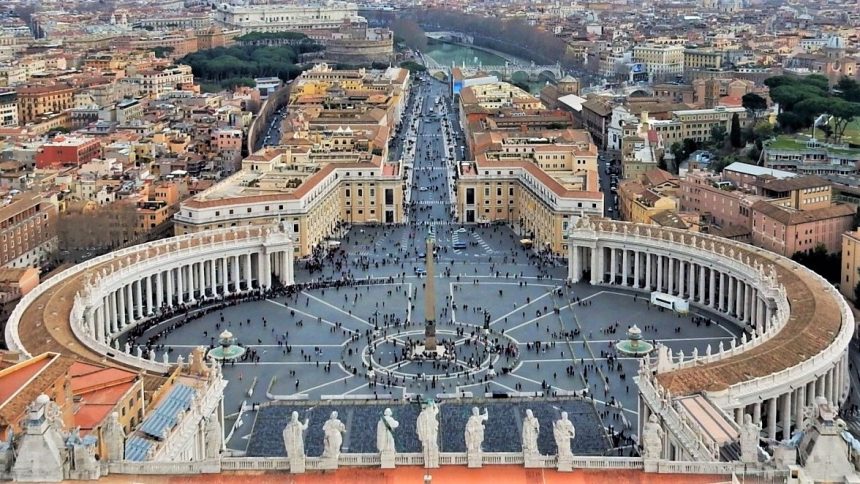When exploring the top ten biggest churches in the world, size matters, but so does history, architecture, and cultural impact. These massive places of worship, from iconic cathedrals to sprawling basilicas, draw millions of visitors and worshippers alike. The biggest churches often boast breathtaking designs, towering spires, and vast interiors that can house thousands.
Think of St. Peters Basilica in Vatican City, a cornerstone of Catholicism, or the awe inspiring Cathedral of Saint John the Divine in New York, blending gothic beauty with modern scale. Ranking the top ten biggest churches means looking at square footage, capacity, and global significance. Some, like the Basilica of Our Lady of Aparecida in Brazil, shine as pilgrimage giants, while others, such as the Hagia Sophia in Istanbul, weave a tale of shifting faiths across centuries. This list of the worlds largest churches uncovers not just buildings, but stories of devotion, engineering marvels, and spiritual landmarks that define cultures. Whether you’re a traveler, a history buff, or simply curious, the top ten biggest churches in the world offer a window into humanity’s grandest expressions of faith
Top Ten Biggest Churches In The World
10. People’s Salvation Cathedral, Bucharest, Romania

Internal Area: 8,400 m²
History: The idea emerged post-Romanian War of Independence (1877–1878), symbolizing Orthodox victory, but was delayed until 1999 when Patriarch Teoctist relaunched it. Construction began December 15, 2010, with the cornerstone laid February 5, 1999, at Unirii Square, moved to Arsenal Hill in 2005. Consecrated November 25, 2018, by Ecumenical Patriarch Bartholomew I and Patriarch Daniel, attended by 55,000, with first liturgy same day. Named “People’s Cathedral” in 1920 by Metropolitan Miron Cristea, reflecting national unity, dedicated to Ascension (Heroes’ Day) and Saint Andrew (Protector of Romania), first patronal feast November 30, 2018, officiated by Patriarch Theophilos III of Jerusalem.
Architecture: Neo-Byzantine style, synthesis of Brâncovenesc, Transylvanian, Moldavian elements, designed by Vanel Exim, capacity 20,000 (7,000 liturgy, 1,000 choir/clergy, 6,000 pilgrims main, 5,000 underground chapel, 10,000 St. Andrew’s Cave gallery), total complex 11 hectares, piazza for 43,000. Dimensions: length 126m interior, 140.7m with stairs, width 67.7m, height 135m (ground-cross), nave height 44m, floor area 6,100m² nave, 8,400m² total, volume 323,000m³ cathedral, 595,000m³ with basement. Mosaic: 25,000m² total, 18,000m² interior, altar 3,000m², Venice glass tesserae, Carrara stone, led by Daniel.
Significance: National symbol, corrects communist-era gigantism, near Palace of Parliament, Ministry of National Defense, Romanian Academy, seen as unifying pole. World records: tallest/largest Eastern Orthodox by volume, area, highest nave (44m), second-widest nave (25.2m, after St. Peter’s, 27m), largest iconostasis, mosaic collection, bell. Criticized as “pharaonic project” (Le Figaro), “God mall,” public funding (120 million euros, law no. 563/2007), estimated real estate value over €1 billion. Pope Francis visited May 31, 2019, prayed “Our Father,” emphasizing brotherhood.
9. Basilica of St. Paul Outside the Walls, Rome, Italy
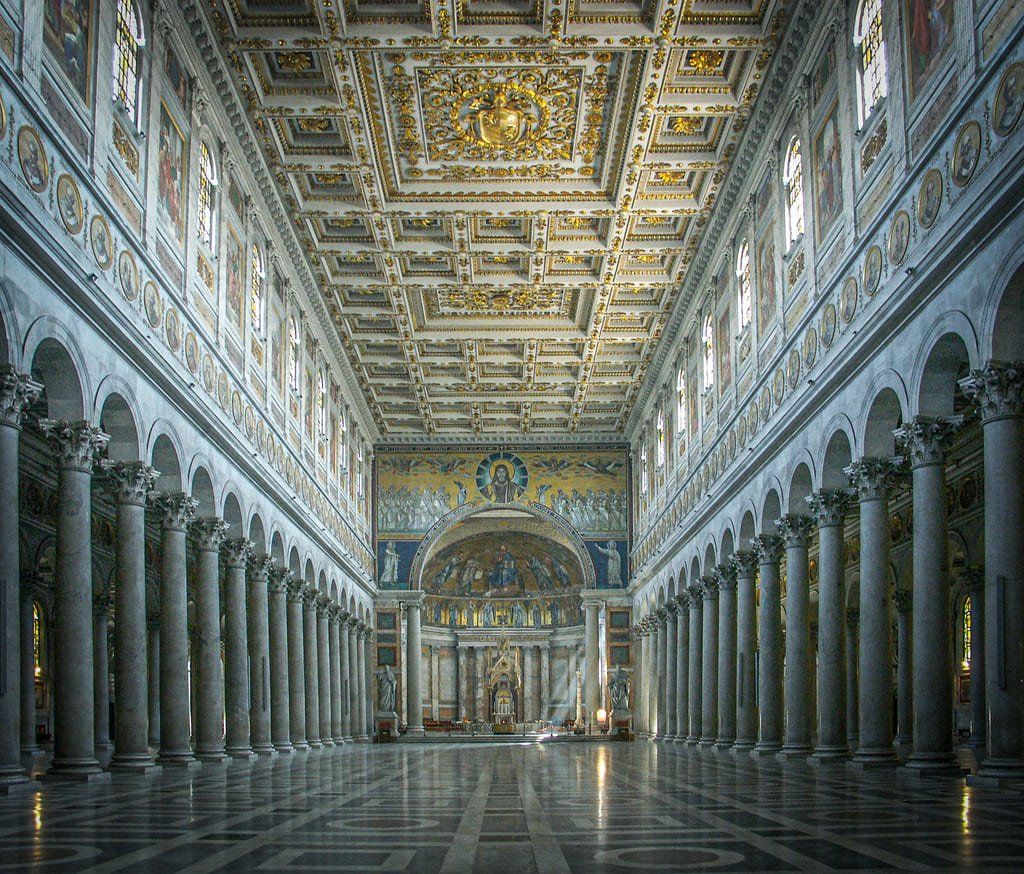
Internal Area: 8,515 m²
History: Founded by Emperor Constantine I in 324 over St. Paul’s burial, consecrated by Pope Sylvester, enlarged by Theodosius I in 386, completed under Pope Leo I (440–461), larger than Old St. Peter’s in 5th century. Damaged by 801 earthquake, roof rebuilt by Leo III, raided by Saracens in 9th century, fortified by Pope John VIII (872–882) as Johannispolis, destroyed by 1348 earthquake. Fire on July 15, 1823, destroyed much, reconstruction ordered by Leo XII in 1825, completed 1854, consecrated by Pope Pius IX. 2009 radiocarbon dating confirmed bones from 1st/2nd century, likely Paul’s.
Architecture: Neo-Classical, designed by Luigi Poletti, length 150m, width 80m, nave width 30m, height 73m, features neo-classicist portico, Holy Door (opened during Jubilees), Byzantine door (1070, 56 bronze panels), 80 columns, wood and stucco ceiling, 5th-century mosaics on triumphal arch, translucent alabaster windows, 13th-century ciborium by Arnolfo di Cambio, cloister (1205–1241 by Vassalletto).
Significance: One of Rome’s four major papal basilicas, Seven Pilgrim Churches, conventual church of Benedictine abbey, part of Vatican extraterritoriality, holds St. Paul’s relics, tomb below altar with inscription “PAULO APOSTOLO MART.”
8. Basilica of the Holy Trinity, Fátima, Portugal
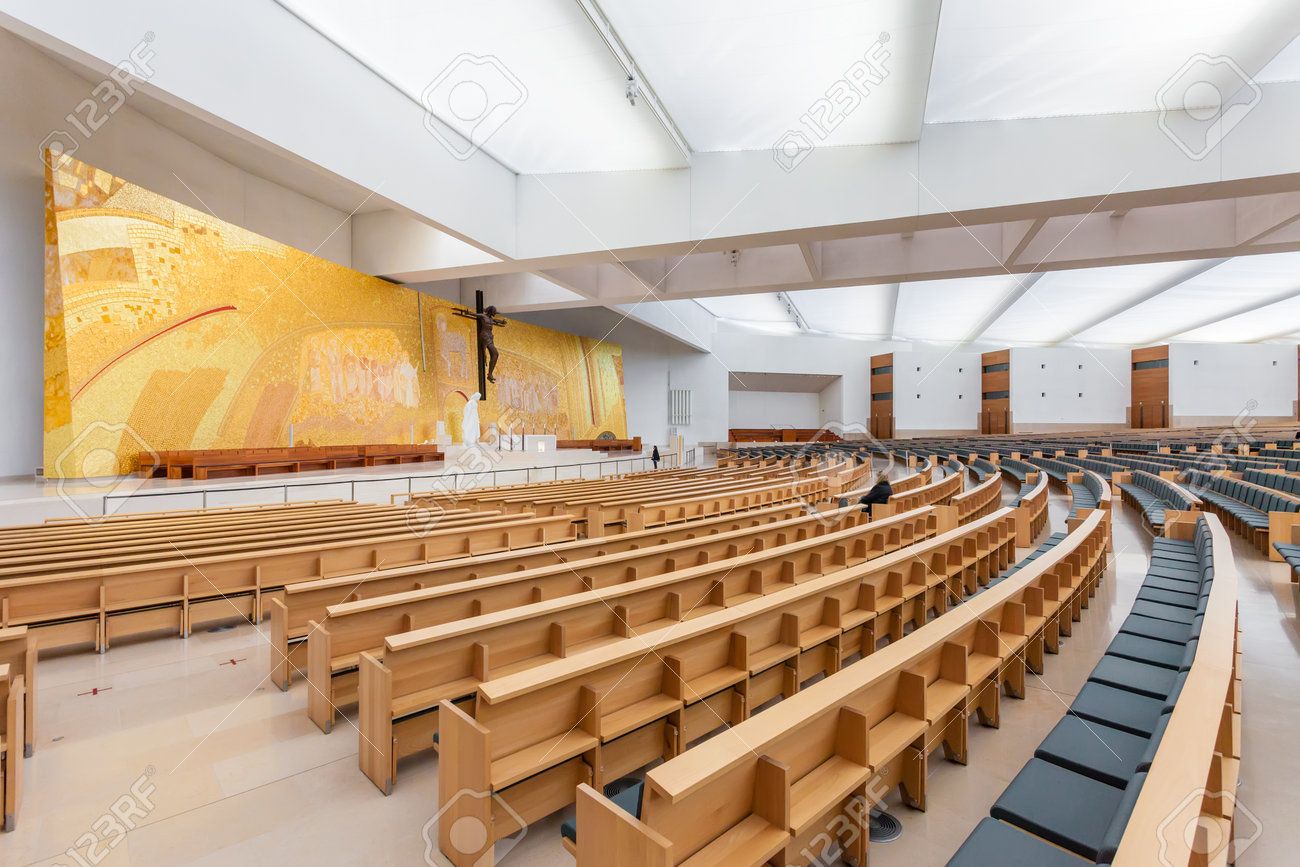
Internal Area: 8,700 m²
History: Consecrated 1953 as Basilica of Our Lady of the Rosary, overcrowding reported 1973, chaotic 1974 inauguration, Monsignor Luciano Guerra proposed new church 1974, construction proposed 1996, international competition 1997, Alexandros Tombazis’ design selected December 19, 1998. Construction began February 2004, cornerstone June 6, 2004, stone from Apostle Peter’s tomb, blessed by Pope John Paul II March 9, 2004, dedicated October 12, 2007, closing 90th Marian apparition anniversary, Cardinal Tarcisio Bertone officiated. Via Lucis stations inaugurated June 2, 2008, by Vanni Rinaldi, 3m Nossa Senhora de Fátima statue in Carrara marble by Benedetto Pietrogrande installed. Artistic projects 2008: 500m² gilded terracotta by Marko Ivan Rupnik, azulejo panels by Álvaro Siza Vieira, Pope John Paul II statue by Czeslaw Dzwigaj (34m high, 17m wide), weathered steel cross by Robert Schad, suspended sculpture by Maria Loizidou, 8m bronze doors by Pedro Calapez and Francisco Providência, stained glass by Kerry Joe Kelly, bronze crucifix by Catherine Green. Elevated to minor basilica June 19, 2012, effective August 13, 2012.
Architecture: Modern, designed by Alexandros Tombazis, length 95m, width 115m, capacity 8,633 seats (3,175 first section, 5,458 second, 76 special needs, presbytery for 100 celebrants). Chapels: Sacred Heart of Jesus (16 confessionals), Immaculate Heart of Mary (12 confessionals), Resurrection of Jesus (200 capacity, 16 confessionals), Death of Jesus (600 capacity), Holy Sacrament (200 for Lausperene). Simple modernist design, functional and iconographic, Door of Christ at main portico, presbytery with large crucifix and Apocalypse mosaic.
Significance: Part of Sanctuary of Fátima, Marian shrine, designed for large pilgrim crowds, elevated to minor basilica 2012, artistic elements (mosaics, statues) symbolize Christian themes, urban transformation enhanced accessibility, 2009 award highlights innovative design.
7. Liverpool Cathedral, Liverpool, United Kingdom
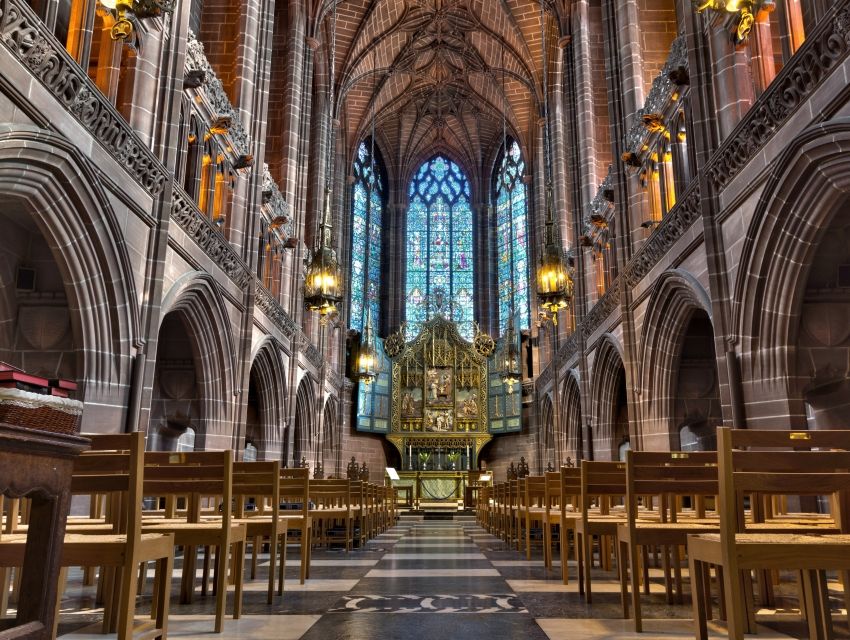
Internal Area: 9,687 m²
History: First Bishop J.C. Ryle installed 1880, used St Peter’s as pro-cathedral, deemed “ugly & hideous.” 1885 Act authorized cathedral on St John’s site, abandoned due to scale, revived 1900 by Francis Chavasse, chose St James’s Mount, consecrated 1924. 1901 competition won by 22-year-old Giles Gilbert Scott, Roman Catholic, foundation stone laid 1904 by King Edward VII, Lady Chapel consecrated 1910, construction limited by World Wars, chancel by 1924, central section by 1941, nave started 1948, completed 1978 with Queen Elizabeth II, received £35-million Culture Recovery Fund October 2021.
Architecture: Gothic Revival, designed by Sir Giles Gilbert Scott, length 188.67m, internal length 160m, total external 207m, area 9,687.4m², tower height 100.8m, choir/nave vault 35.3m/36.5m, under tower vault 53.3m, tower arches 32.6m, materials Woolton sandstone, later NW quarries. Largest cathedral in Britain, eighth largest church globally, fifth-largest by volume, competes with Cathedral of St. John the Divine for largest Anglican, belltower highest (67m) and heaviest (16.5 long tons/16.8 tonnes) ringing peal, Great George bell 14.5 long tons/14.7 tonnes, organ largest in UK, 10,268 pipes, two five-manual consoles, annual recital Saturday nearest 18 October. Grade I listed, National Heritage List.
Significance: Seat of Bishop of Liverpool, mother church, dedicated to Christ, linked by Hope Street to Metropolitan Cathedral, 0.5 miles apart, hosts concerts, graduations, exhibitions, capacity 3,500 standing/2,300 seated, open daily 8:00 am–6:00 pm (closes 3 pm Christmas Day), free admission, £5 suggested donation, featured on British passport, 2024 Royal Mail Christmas stamp by Judy Joel, burials include Bishops Chavasse, David, Sheppard, Sir Giles Gilbert Scott, Vesteys, Victoria Cross recipient Arthur Herbert Lindsay Richardson, art by Edward Carter Preston, Elisabeth Frink’s “Welcoming Christ” (1993), Tracey Emin’s “For You” (2008, neon “I felt you and I knew you loved me”), Anish Kapoor exhibition 2024 for “100th anniversary,” stained glass 1,700m² by James Powell and Sons, John William Brown, James Humphries Hogan, Carl Edwards, security by Liverpool Cathedral Constables, 24-hour watch.
6. Basilica of Our Lady of Licheń, Licheń Stary, Poland
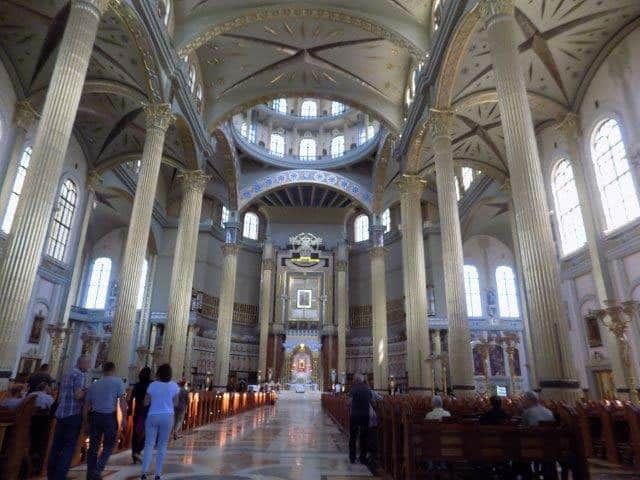
Internal Area: 10,090 m²
History: Foundation 1813, Tomasz Kłossowski’s vision, Pope John Paul II blessed 1999, raised to minor basilica February 25, 2005, 157-stop pipe organ (6 manuals, pedalboard) built 2002–2007, largest in Poland, 4th in Europe, 13th worldwide, Polish museum parts translocated 2007 by Marian Fathers.
Architecture: Designed by Barbara Bielecka, built 1994–2004, postmodern, nave 120m long, 77m wide, central dome 98m high, tower 141.5m, materials concrete, steel, bricks, south-facing façade.
Significance: Dedicated to Our Lady of Sorrows, Queen of Poland, icon possibly 18th century, Poland’s largest church, one of world’s largest/tallest, principal pilgrimage site, consecrated 2004.
5. Cathedral of St. John the Divine, New York City, United States
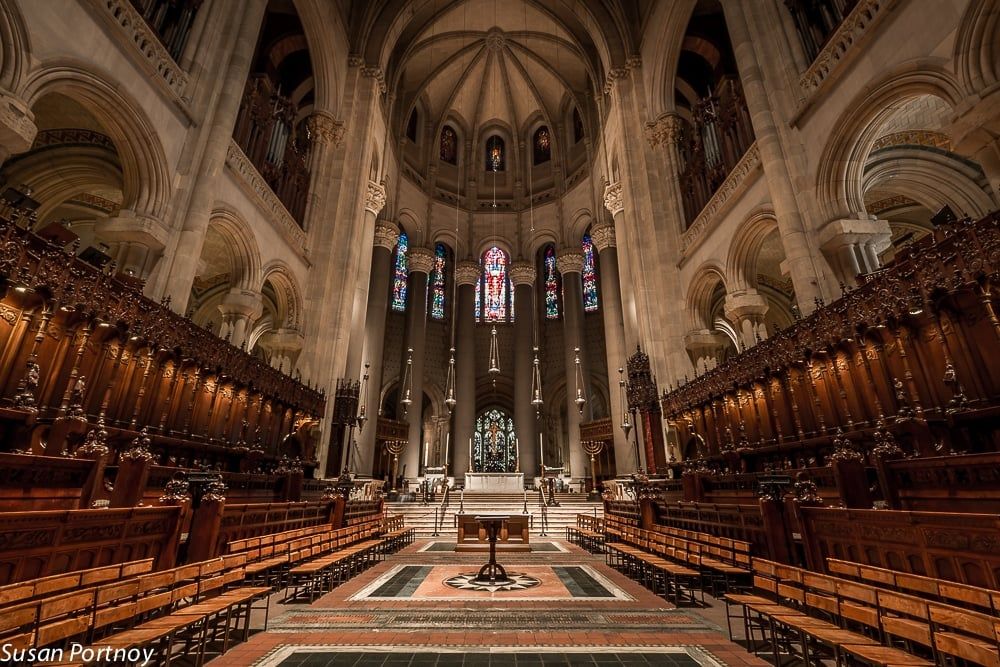
Internal Area: 11,241 m²
History: Construction began December 27, 1892, cornerstone on St. John’s Day, first services January 1899 in Tiffany Chapel (crypt), choir consecrated April 19, 1911, full 601 ft length opened November 30, 1941, fire December 18, 2001, damaged north transept, reopened two weeks later, rededicated November 30, 2008, fire April 14, 2019, smoke damage, organ restoration completed December 2024, site acquired October 1891 for $850,000, previously Leake & Watts Orphan Asylum (1838-1843), NYC Landmark main building June 2003 (overturned October 2003), cathedral close February 21, 2017, reference no. 2585, $1.5 million grant August 2024 for Synod Hall community center.
Architecture: Architects Christopher Grant LaFarge, George Lewis Heins, later Ralph Adams Cram, styles Byzantine Revival, Romanesque Revival (1892), Gothic Revival post-1909, groundbreaking December 27, 1892, completed crossing/apse 1911, navepp 1941, incomplete southern transept, towers, materials stone, granite, limestone, dome Guastavino tiles, copper dome 2019-2022, dimensions 601 ft long, 121,000 sq ft area, nave roof height 177 ft, narthex 50 ft x 207 ft, towers St. Peter north 177 ft, St. Paul south extended 1982-1992 to 291 ft (planned 266 ft), western facade 207 ft wide, five portals, largest Portal of Paradise carvings 1988, rose window 40 ft diameter, largest U.S., by Charles Connick, interior six north-south rows piers, five aisles, sixteen sub-bays named (Sports, Arts, Motherhood), choir eight 54 ft tall, 6 ft diameter columns, 130 short tons each, foundations 130 ft deep, organ built 1906-1910 by Ernest M. Skinner, enlarged 1954, 8,514 pipes, restored post-2001, 2019 fires, cathedral close buildings Ithiel Town Building (Greek Revival, 1843), Diocesan House (Tudor Gothic, 1911), Synod Hall (1913, pink Kingwood sandstone, seats over 1,000), Cathedral School (Collegiate Gothic, 1913), Bishop’s house, deanery (Chateauesque, post-1913).
Significance: Nicknamed “St. John the Unfinished,” proposed 1887 as “American Westminster Abbey” by Henry C. Potter, cost $10 million, funded by Astor, Vanderbilt, Belmont, Barberini tapestries gifted 1891, post-1940s social issues, 1970s civil rights, Vietnam War opposition, 1978 resumed construction for community space, led by James Parks Morton, NYC Landmark 2017, cathedral close 11.5 acres, excludes Avalon Morningside Park, Enclave residential buildings.
4. Seville Cathedral, Seville, Spain

Internal Area: 11,500 m²
History: Originated as Almohad mosque ordered by Abu Yaqub Yusuf 1172, dedicated 1182, completed 1198, dimensions 113x135m, 15,000m², minaret, ablutions courtyard, converted 1248 post-Ferdinand III conquest, new cathedral decision July 8, 1401, construction 1402, completed 1506–1507, crossing lantern collapse/rebuild 1511–1519, baptisms (Infante Juan of Aragon 1478), burials (Ferdinand III, Alfonso X, Peter the Cruel, Christopher Columbus, Diego Columbus, cardinals Juan de Cervantes, Pedro González de Mendoza), timeline 1184 mosque began, 1198 completed, 1356/1362 minaret destroyed by earthquakes, 1466 Royal Chapel demolition authorized, 1888 main dome collapsed by earthquake.
Architecture: Gothic, Moorish, Renaissance, length 135m, width 100m, nave width 15m, height 36m, central nave 42m, Giralda tower 105m, base 7.0m above sea level, 13m per side, longest nave Spain, great boxlike choir loft, vast Gothic retable, 80 chapels including Capilla Real, preserved mosque elements Patio de los Naranjos (courtyard, fountain, orange trees), Giralda (former minaret, bell tower, Renaissance top, “El Giraldillo” statue 1568), began northeast corner 1402, eastern part by 1467, stained glass by Enrique Aleman post-1478, retable designed 1482 by Pieter Dancart, crossing lantern before 1502, organ replaced 1901–1903, reworked 1996, doors 15 total, Door of Baptism (15th century, Gothic, Lorenzo Mercadante), Door of Assumption (1877–1898, Ricardo Bellver), Door of the Conception (1895–1927, Gothic, Demetrio de los
Significance: Largest Gothic church, UNESCO World Heritage Site, burial place of Columbus, symbol of Seville’s post-Reconquista wealth and faith.
3. Milan Cathedral, Milan, Italy
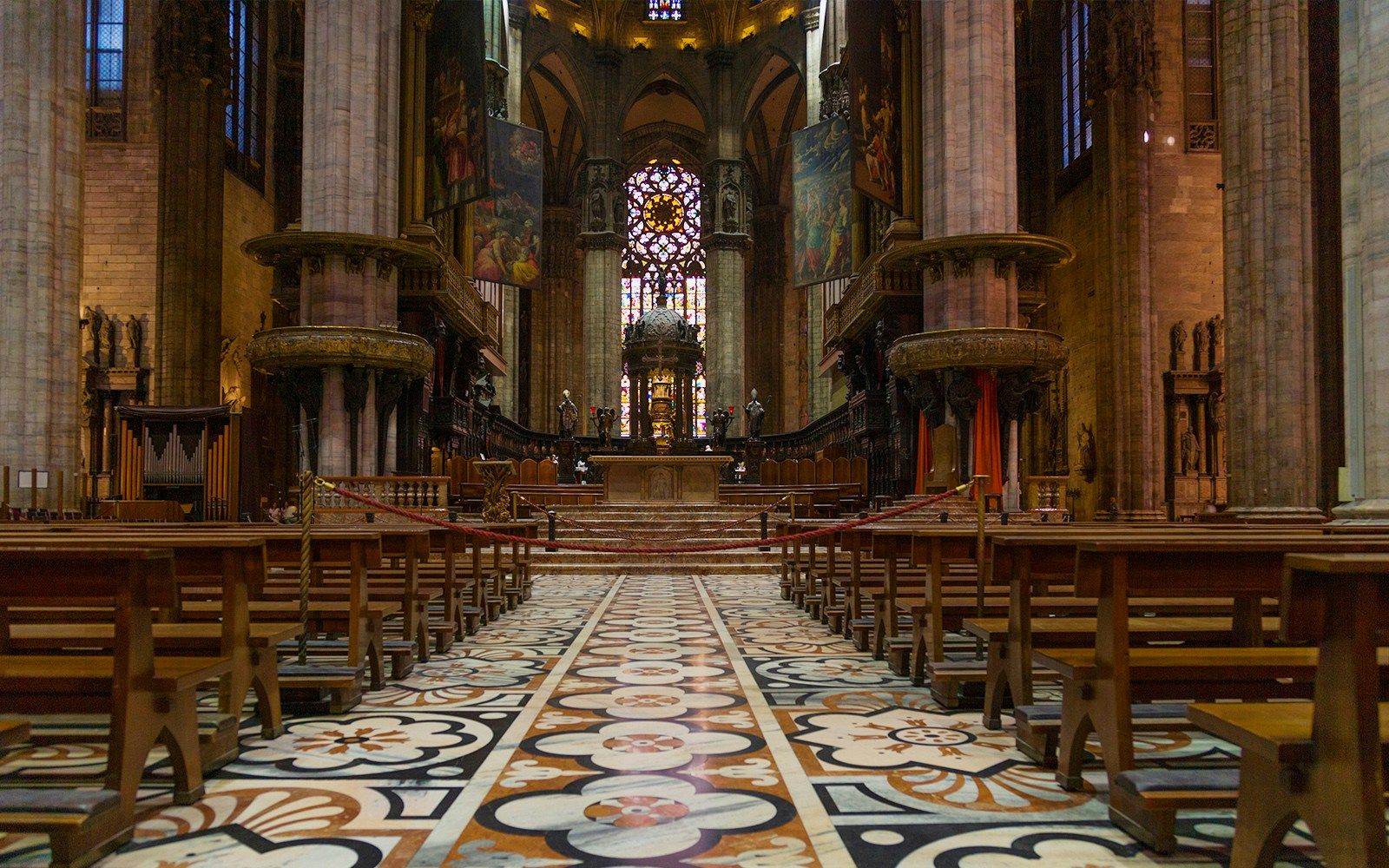
Internal Area: 11,700 m²
History: Construction from 1386 to 1965, took nearly six centuries, reflecting Milan’s ambition.
Architecture: Gothic, features 135 spires and a marble facade, largest in Italy.
Significance: Cultural landmark, tourist attraction, seat of the Archbishop, houses the Holy Nail relic.
2. Cathedral Basilica of Our Lady Aparecida, Aparecida, Brazil
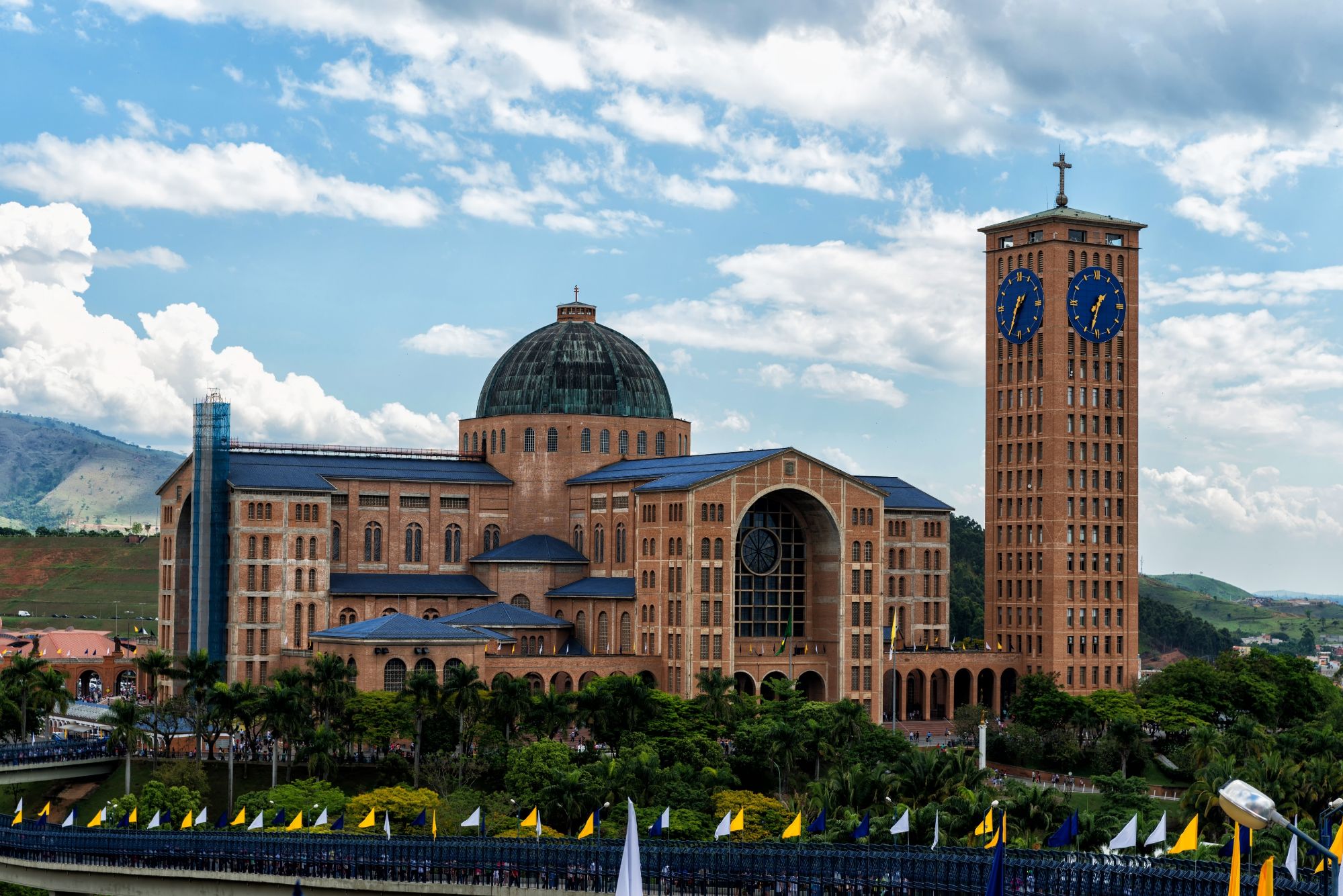
Internal Area: 12,000 m²
History: Completed in 1980, second-largest Catholic church, built to accommodate pilgrims.
Architecture: Romanesque Revival, can hold 100,000 people, with a blue roof and 100-meter tower.
Significance: Major pilgrimage site for Our Lady of Aparecida, Brazil’s patroness, reflects national religious identity.
1. St. Peter’s Basilica, Vatican City
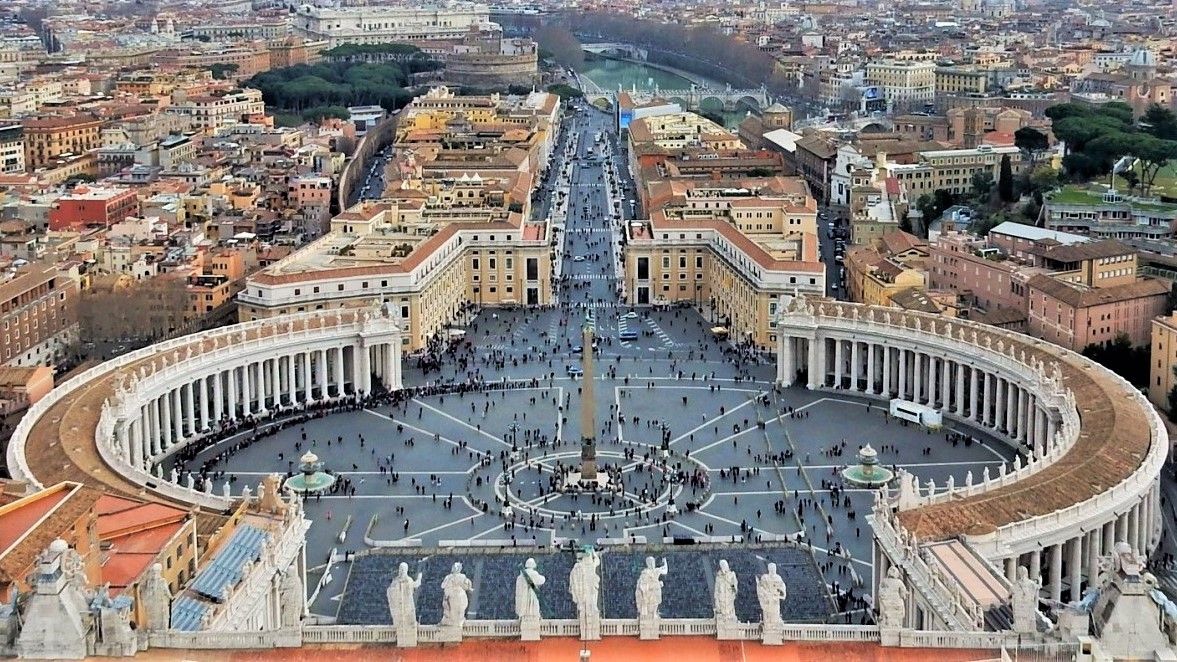
Internal Area: 15,160 m²
History: Built from 1506 to 1626 over St. Peter’s tomb,a Renaissance and baroque masterpiece.
Architecture: Features Michelangelo’s dome and Bernini’s baldachin, capacity for 60,000.
Significance: Holiest Catholic shrine, center of papal ceremonies, UNESCO World Heritage Site, symbol of global Christian unity.

